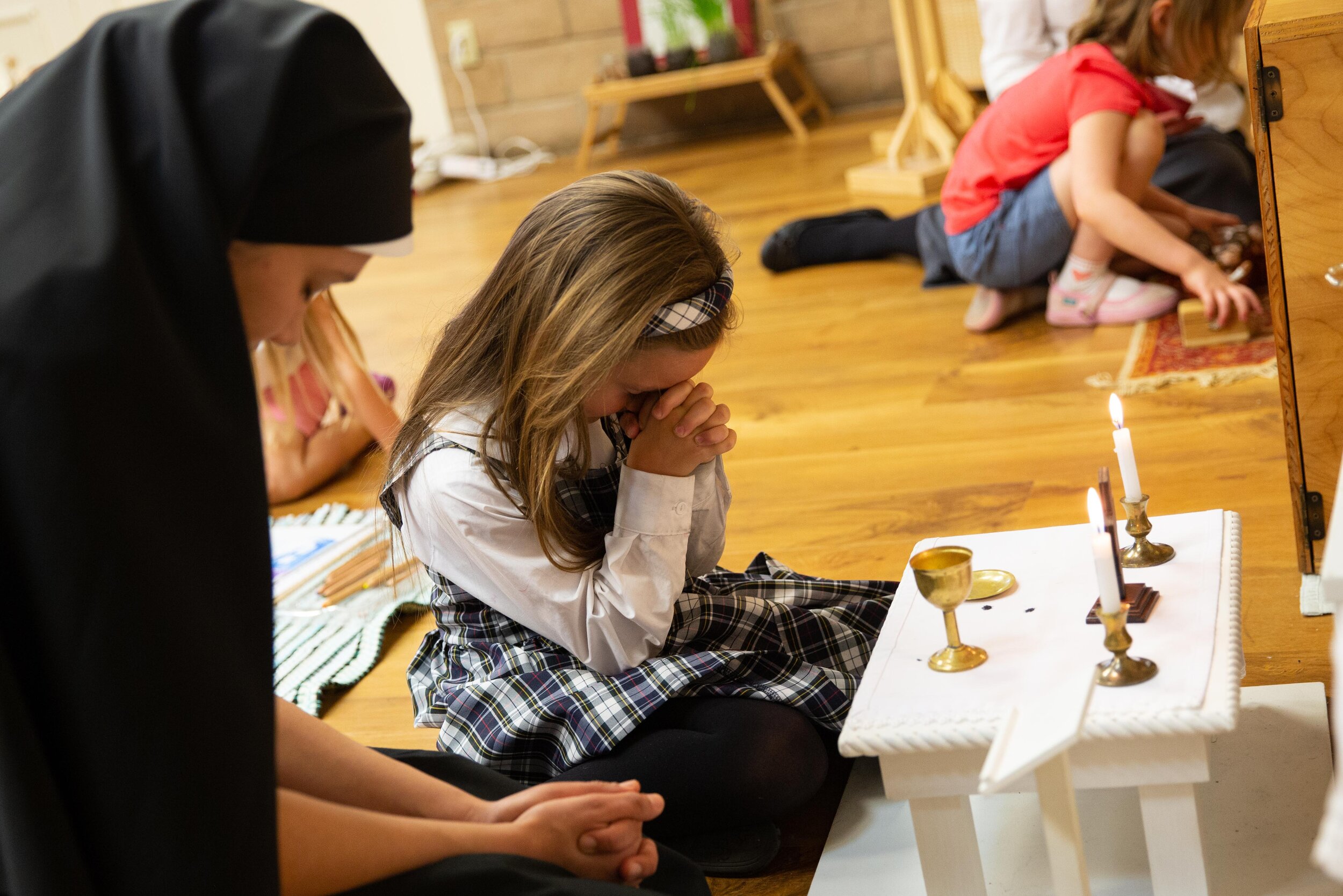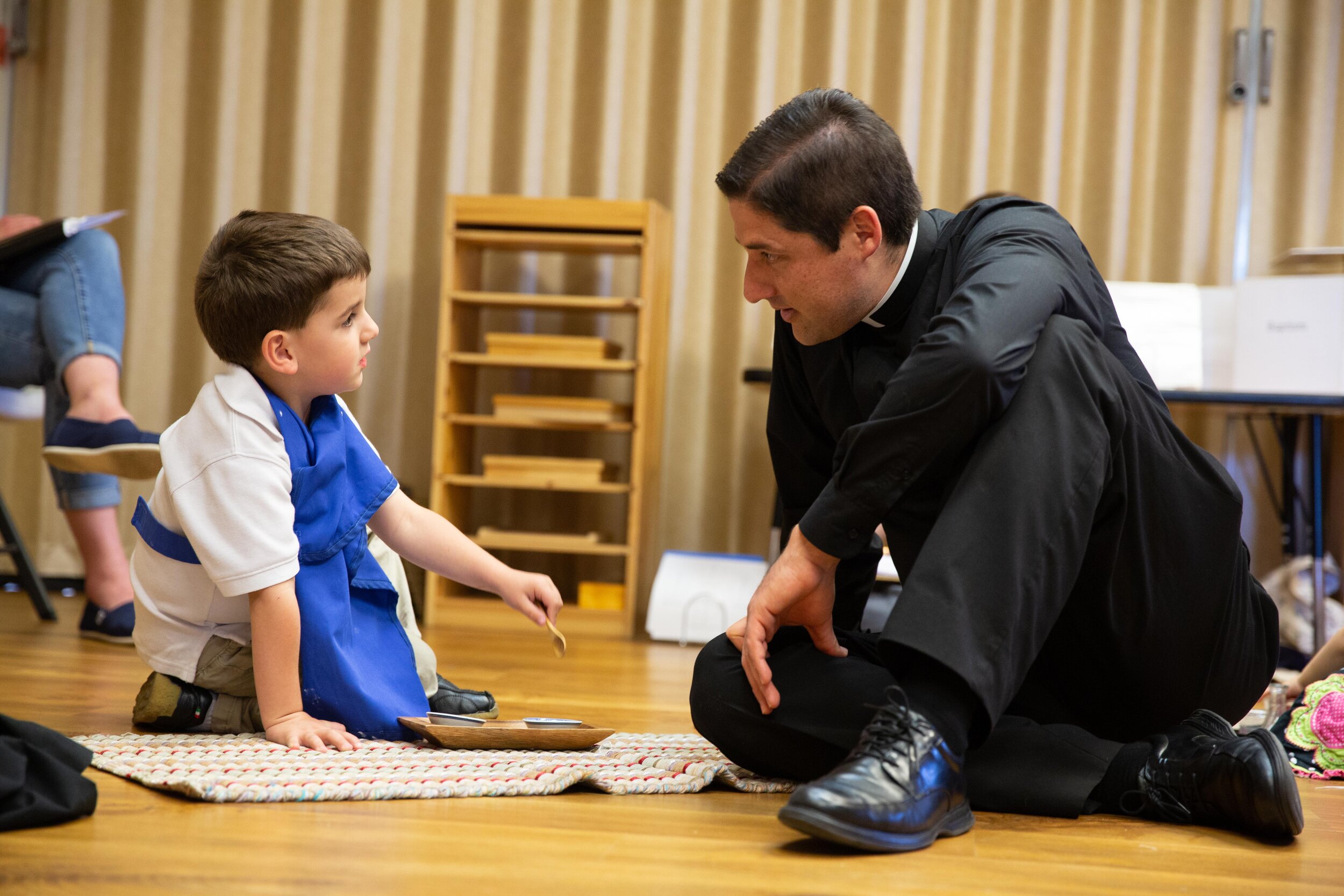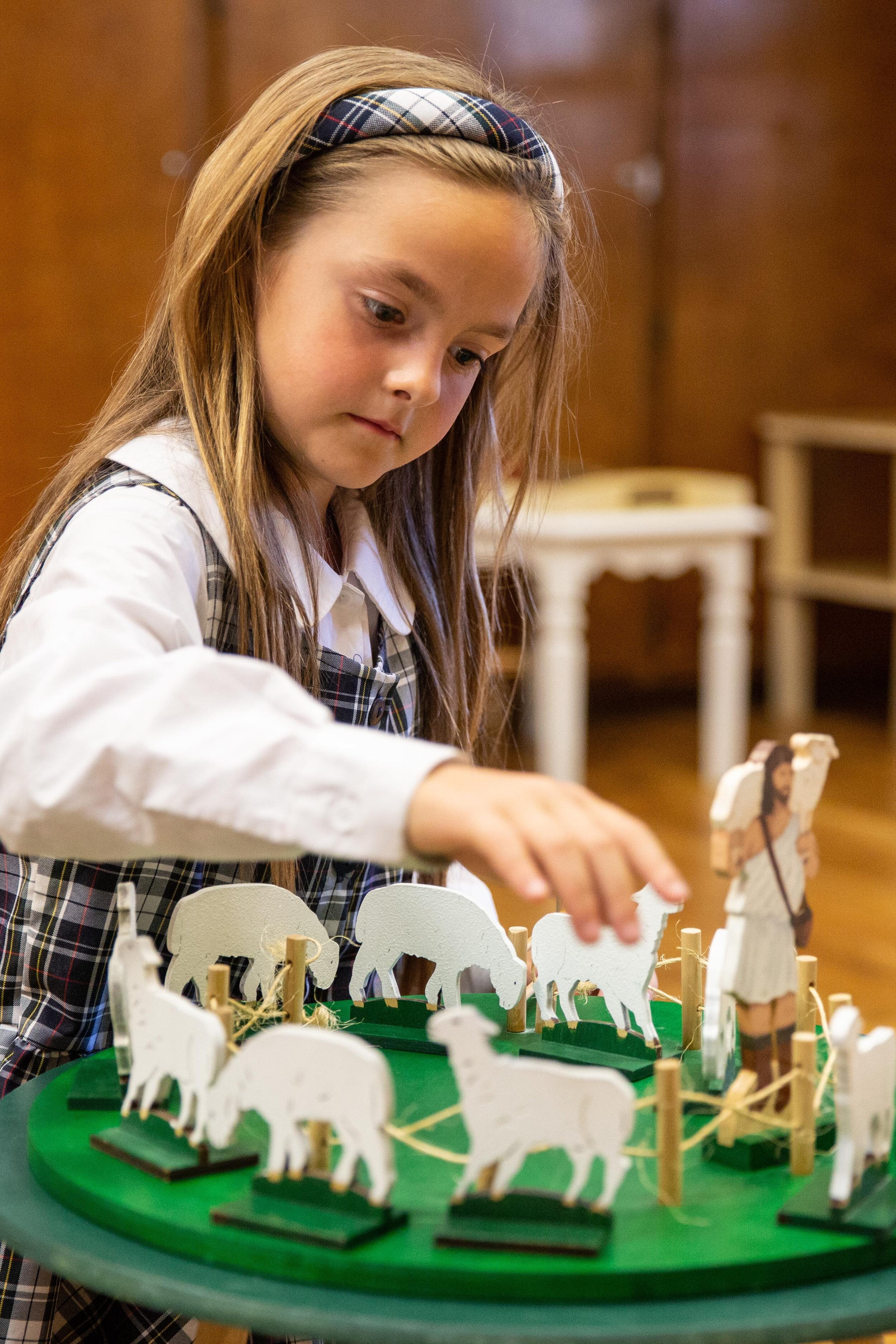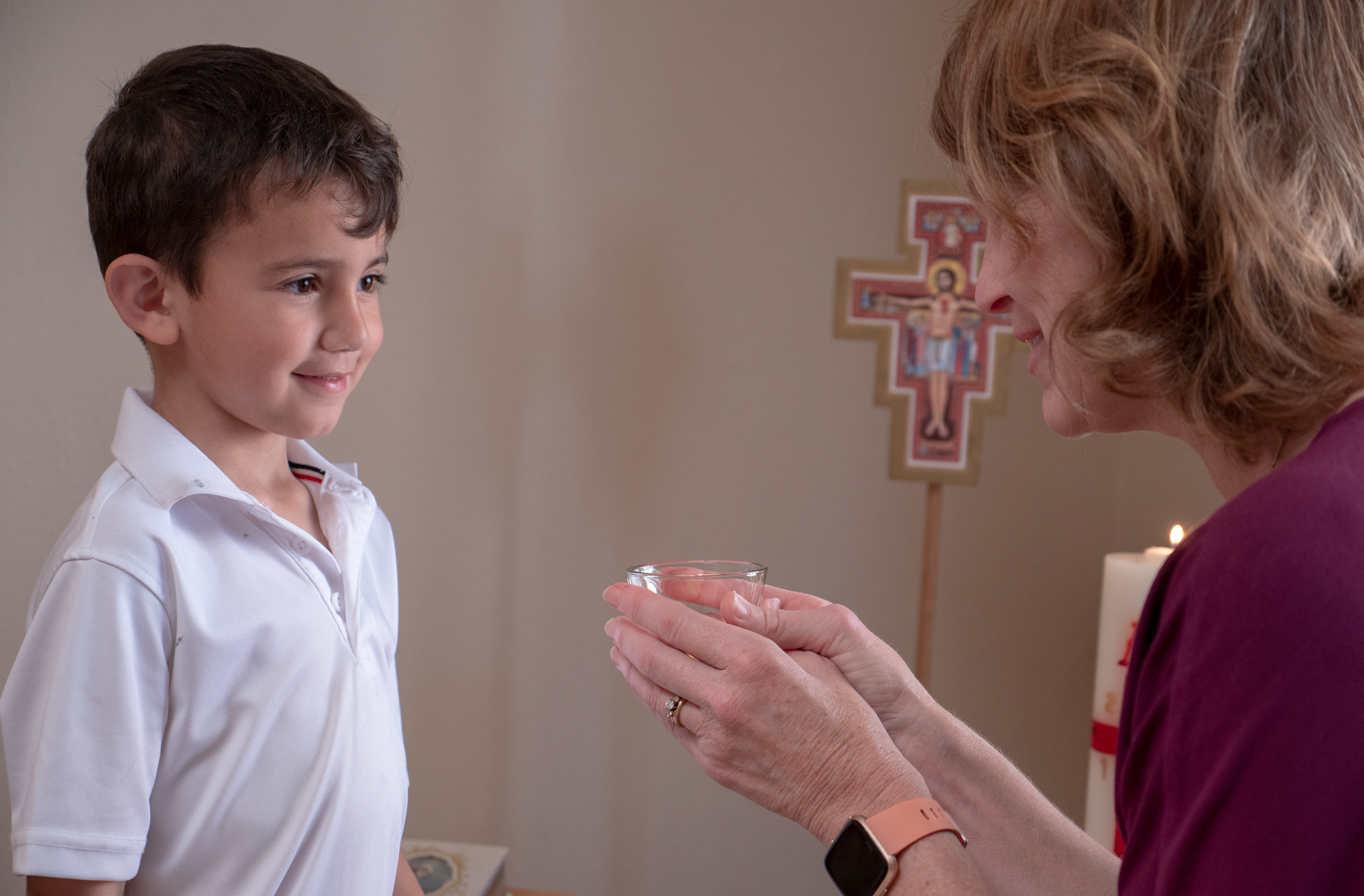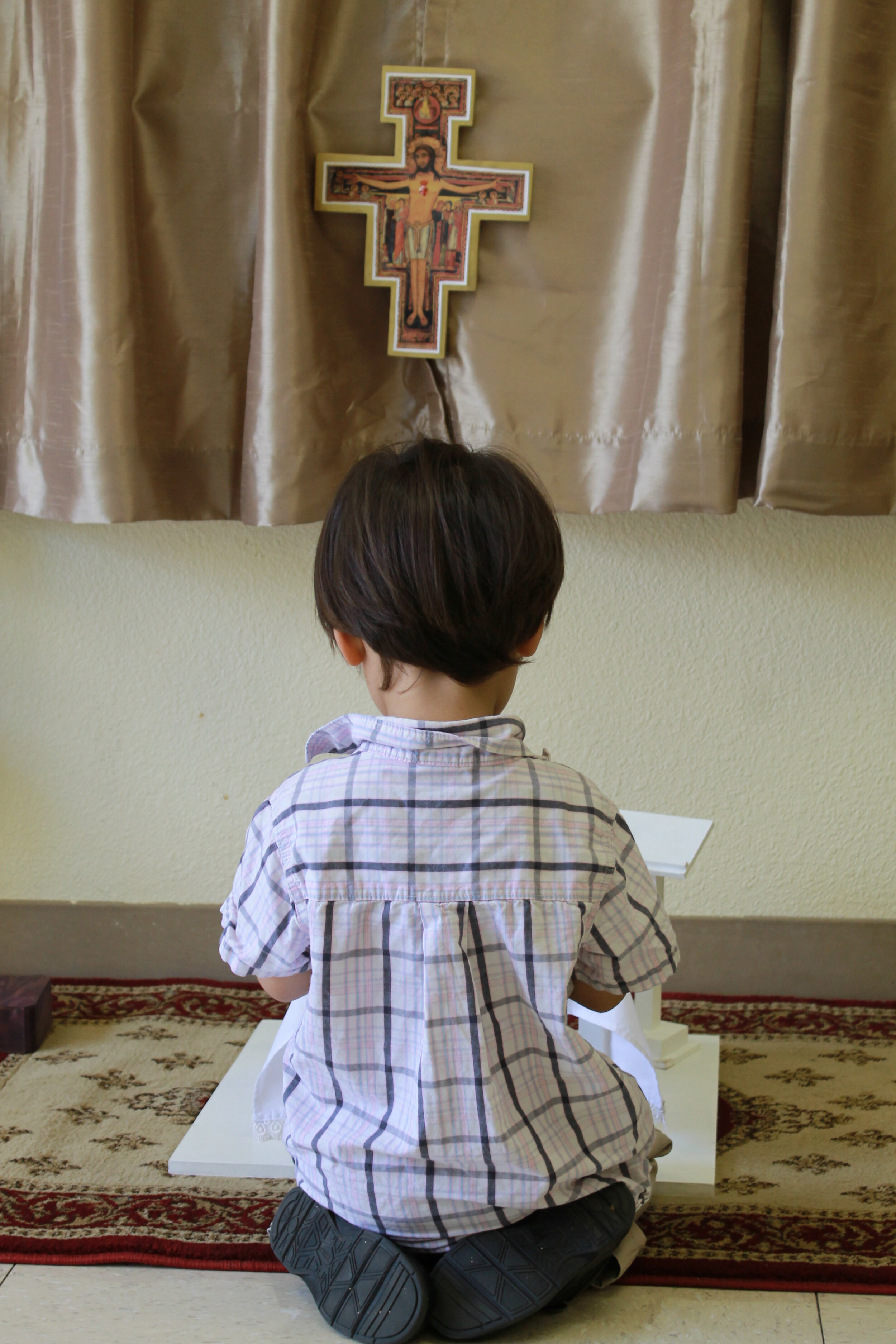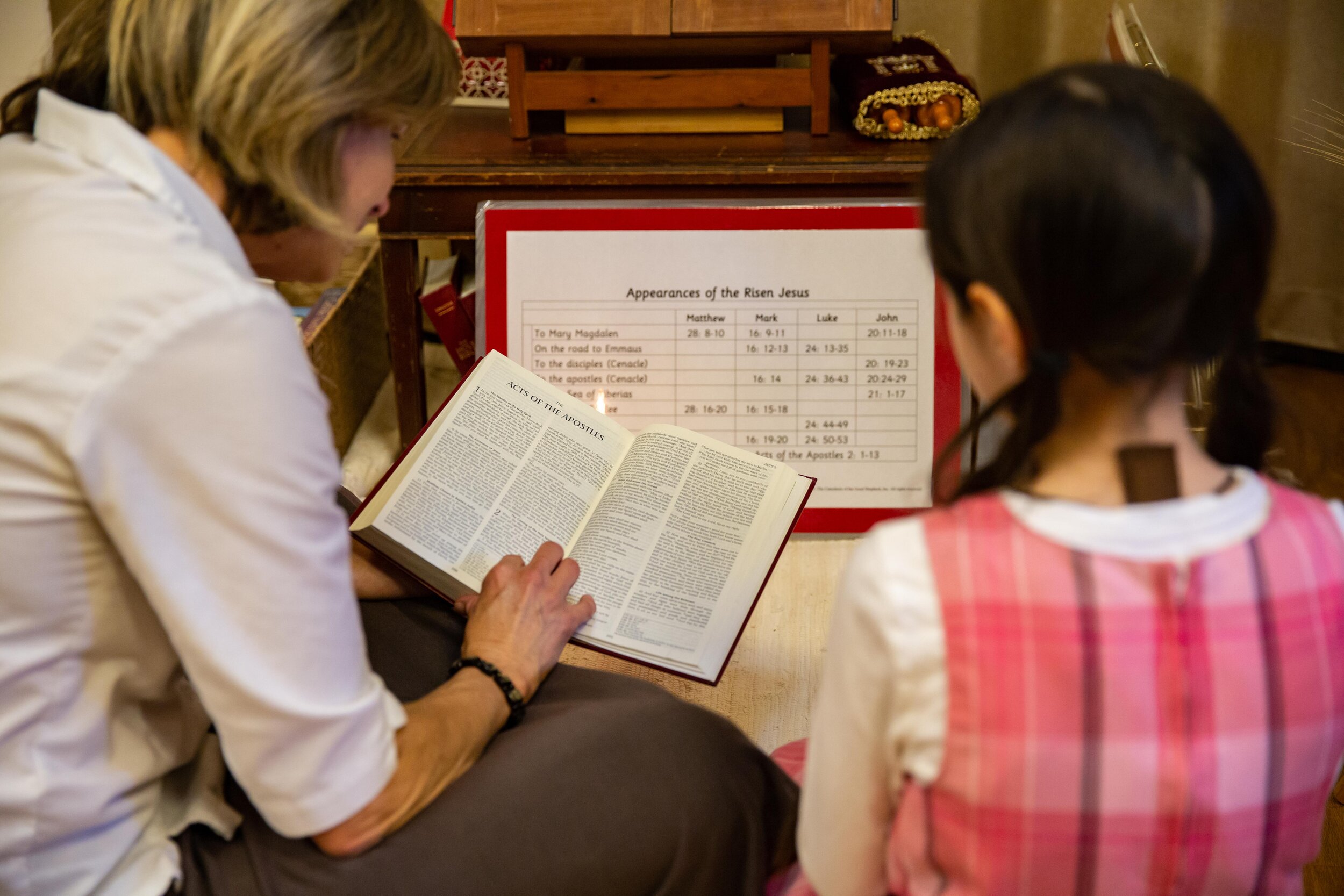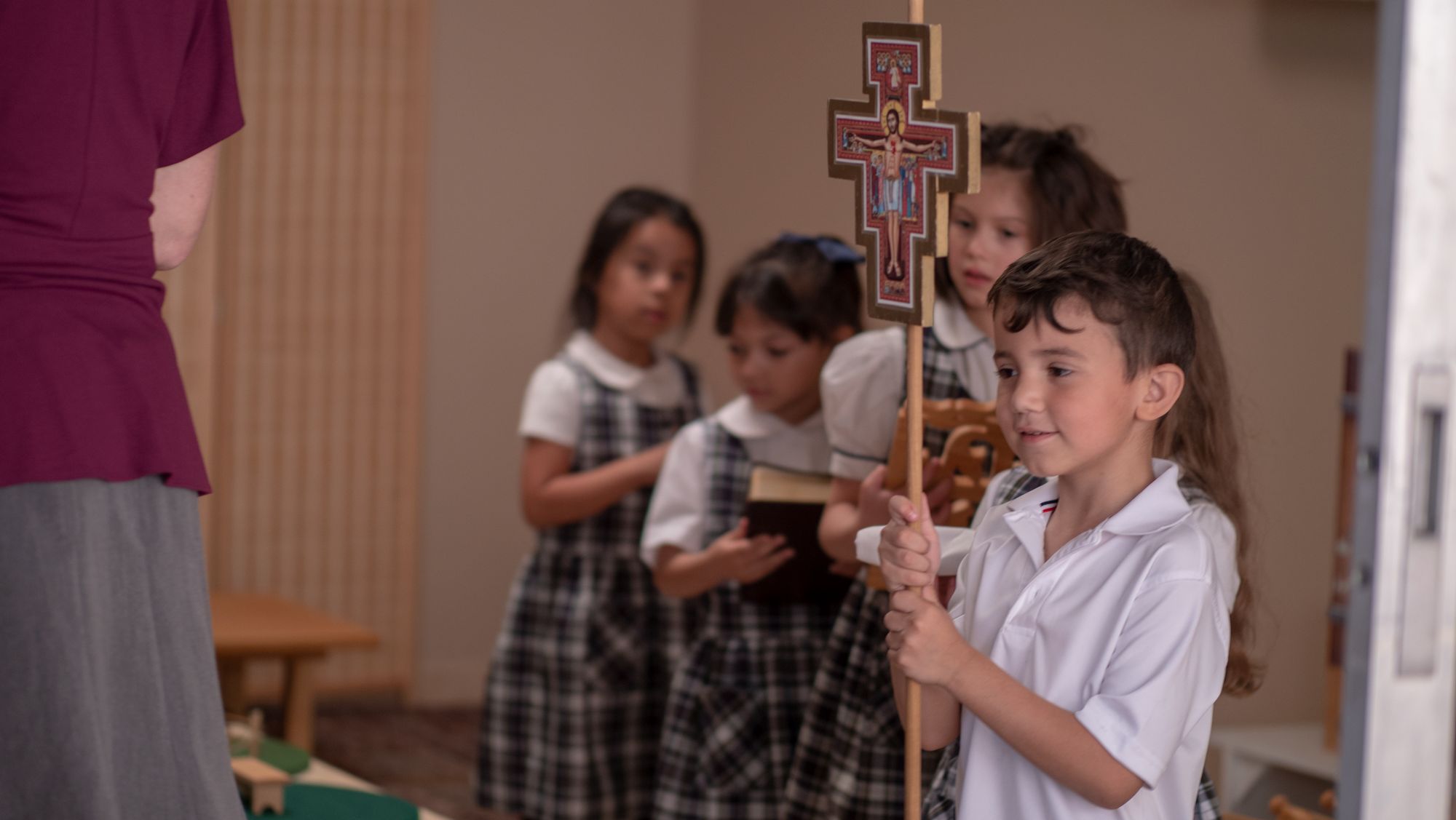Catechesis of the Good Shepherd is a distinct approach to the religious formation of the child. It takes place in the Atrium — where a child can fall in love with God.
Founded in Rome in 1954, Catechesis of the Good Shepherd is centered on Jesus Christ and rooted in Scripture and the liturgy of the Catholic Church. The Atrium is sacred space that has been lovingly prepared for the children with beautiful, handmade materials in the Montessori tradition. Through these materials, the children have hands-on experiences with the essential proclamations of the Christian faith and with God Himself, leading to contemplative prayer and a deep relationship with God in children as young as 2- 1/2. In the atrium the child is called into a covenant relationship with Jesus the Good Shepherd. The child hears His call, a call that is by name, and she responds with deep, abiding love: the mystery of God meets the mystery of the child (Sofia Cavalletti). The divine covenant is entered in a personal way by the child: she falls in love with God. In later years, if she is ever tempted to stray from her faith, it will be much more difficult to walk away from a Person with whom she is in relationship than from an institution.
Our Atrium
Valley of the Sacred Heart atrium was established in 2011. It is located at St. Peter Church in Dixon and is a part of Valley of the Sacred Heart Academy. Our atrium is under the guidance of the Sacramento Elverta atrium and the United States CGS organization. Children are allowed to attend the Abide in Me First Holy Communion Retreat if they have completed two years in Level 2 of the atrium. We offer limited spaces to children who are not enrolled in Valley of the Sacred Heart Academy.
For more information about CGS in the Diocese of Sacramento, visit www.youngsheep.org.
For more information about CGS in the United States, visit www.cgsusa.org.
Our Approach
Level 1: Ages 3-6 +
During these tender years, the child is characterized by a deep sense of wonder and awe. Have you ever taken a nature walk with a child this age? He notices every little insect, the rainbow in the sheen of oil on the ground, a plane flying overhead — and he stops to study each one intently. He revels in these gifts of his environment.
The Level 1 Atrium reflects this wonder and awe of the child, his ability to joyfully receive and delight in the Gift. At this level, the child listens to and works with parables that show the beauty and value of God’s Kingdom.
Through Practical Life exercises, he learns control of movement and how to quiet his body.
Through the model altar and other nomenclature materials, he is drawn into the liturgical life of the church.
Through hands-on materials for each Scripture he hears, he can return again and again to key Bible passages to continue listening for the voice of His Shepherd.
Level 2: Ages 6-9 +
During these years, the child develops reasoning skills, a sense of justice, and a thirst for culture. She wonders how the world came to be and what the rules are for living in it. Maria Montessori called this the “age of rudeness.” A child has no qualms about sharing her thoughts and opinions about others and the world because she is enlivened by the intellectual capability through which her mind has produced these thoughts.
The Level 2 Atrium reflects and hones these new capabilities. As the child deepens her relationship with the Good Shepherd, she takes delight in hearing from Him how He wants her to treat the other sheep of His flock. Moral formation through the New Testament maxims of Jesus begins at this level. Now the child reads and works with parables that show how to live in God’s Kingdom. She also works with the history of that Kingdom.
Handwork such as embroidery and calligraphy now fills the space of the Level 1 Practical Life works.
The child enters more deeply into the liturgical life of the church through the Sacraments of First Reconciliation and First Eucharist after an intense and prayerful period of preparation.
There is a spiral expansion of the Level 1 Scriptures and hands-on materials through the addition of cultural and historical details. Additionally, the child begins to synthesize key Scriptures, such as looking for common themes that unite all of the Level 1 Messianic Prophecies.
Level 3: Ages 9-12 +
As the child moves through childhood and towards adolescence, he remains highly sensitive to history and culture and still experiences a deep need for justice. Learning and working in community are particularly important to this child. He begins to think more abstractly. The child wonders what his place is in the world and looks to role models to guide him.
The Level 3 Atrium meets these sensitivities in various ways. Now the child looks to his Good Shepherd as a model for his own life and choices. Moral formation develops further through the addition of more New Testament maxims of Jesus. Now the child reads and works with parables that show how to live out the specific moral virtues of God’s Kingdom.
In-depth work with the Old Testament is a new element in the Level 3 Atrium. This work is accomplished through typology: where in the Old Testament does it point to the New, and how does the New Testament shine light on the Old? The child reads and reflects on Old Testament Scripture through the lens of Redemption and the fulfillment of God’s Kingdom at the end of time.
The child’s liturgical life in the church is enriched through working extensively with the Mass and each of the sacraments.
Also, the child looks at how the Plan of God has unfolded throughout history with a particular focus on the history of the Jewish People. She begins to contemplate what her role is in this history, which plants the seeds for vocation discernment. She begins to wonder how she can lay down her own life in imitation of the Good Shepherd whom she loves.
The Atrium Child +
A little girl, 3 years old, sat at the prayer table quietly during a period of silent reflection. Suddenly she stood up, grasped a small Good Shepherd statue from the prayer table gently in her hands, kissed it, and whispered reverently, “Thank you.”
During a reflection on the found sheep (Luke 15:3-6), the catechist asked the children if the Good Shepherd would ever stop looking for his sheep who was lost. “No,” was their whispery, definite reply with shakes of their heads. “What if it gets dark?” the catechist asked. “Would the Good Shepherd keep searching?” “Of course!” a 5-year-old boy exclaimed, “because he can still see at night. Jesus is the Light!”
The Atrium Adult +
Gianna Gobbi, one of the founders of CGS, referred to the adult’s role in the Atrium as “listening to God with the children.” Indeed, the catechist is not the teacher. Our role is to be the matchmaker between God and the child and then to let the True Teacher, the Holy Spirit, take over. The experience of the adult in the Atrium becomes one of awe and wonder, too. We catechists are so often humbled and enriched by what we hear with the children. Together we ask, “God, who are you? How do you love us?”
A catechist was reading the account of Jesus’ birth and the adoration of the shepherds, and a 3-year-old girl gently moved the figures as she listened. When she heard that Jesus was born, she placed the baby in the manger and brought Mary and Joseph close, like a typical nativity scene. However, when the catechist read that the shepherds came to adore him, the little girl moved Mary and Joseph out to the sides. She paused, looking at them, and said, “They have to make room for the shepherds.” The catechist was silent, reflecting on these words. She thought about how selfless Mary and Joseph had been. They spent a lifetime “moving aside” so that others could have Jesus. The catechist took this reflection with her during her own prayer time over the next several days, pondering this mystery. She now has an entirely new way of looking at nativity scenes.
Maria Montessori said, “If education recognizes the intrinsic value of the child’s personality and provides an environment suited to spiritual growth, we have the revelation of an entirely New Child, whose astonishing characteristics can eventually contribute to the betterment of the world.”
The international CGS community has put forth a new concept intimately connected to Montessori’s: the New Adult. In the Atrium, we adults are renewed; we too have ‘astonishing characteristics’ emerge. We are drawn ever closer to our Good Shepherd and we “follow him for we know his voice.” The children have helped us to listen.

